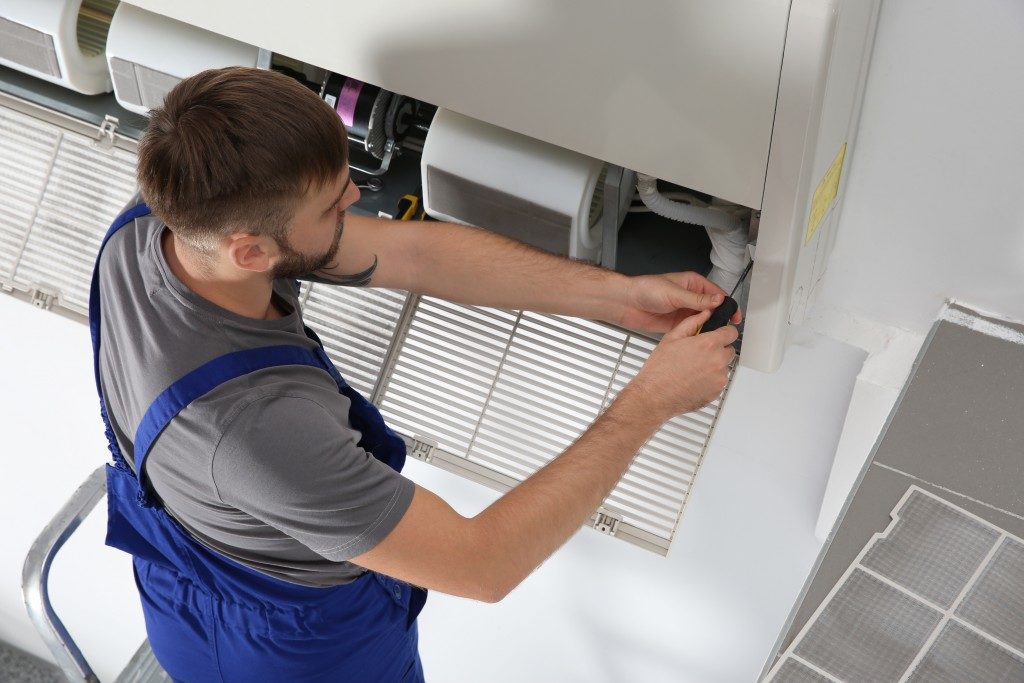If you’re planning to install a heating, ventilation, and air-conditioning (HVAC) system in your home or if you’re replacing an existing one, you might run into a lot of options. Various types of heating and cooling systems such as ductless HVAC systems, window-type, and central air-conditioning systems are available in the market, all of them with unique features. If you’re curious about how ductless HVAC systems work, this will help you decide if a ductless air-conditioning system is a suitable option for your home.
Ductless HVAC systems, also known as split air conditioning systems, can cool a room like central ACs do but they don’t require the installation of air ducts or air vents in your home. Ductless air conditioners have three major components:
- An outdoor condenser, similar to central ACs, pumps cool air to the indoor unit.
- An indoor unit mounted on the wall or ceiling releases cool air into the room
- A conduit that connects the outdoor condenser to the indoor unit where coolant passes through. The conduit is also composed of a power cable, refrigerant cooling tubes, and a condensate drain.
There are two types of ductless HVAC systems. A mini-split ductless system cools a single room or zone through one indoor unit connected to the outdoor condenser. On the other hand, a multi-split ductless system connects up to five indoor units to the outdoor condenser. In multi-split ductless systems, heating and cooling in several zones can be controlled at the same time or independently of each other depending on the model of the indoor and outdoor units.
Before installing a ductless HVAC system, the following factors are considered:
- Number of rooms that needs cooling and heating
- Size of each room or zone
- Installation factors (existence of ductwork, voltage tolerance of the home’s electrical system, etc.)
What are the Benefits of a Ductless HVAC System?
Easy to Install
 Compared to central air-conditioning units, ductless systems can be installed more quickly as they don’t require any invasive ductwork. While most ductless AC units are visibly mounted on walls and ceilings, they can also be concealed through decorative means so they can blend well with the home interior. Some homes hide ductless units in built-in bookcases, recessed areas, or cavities on the ceiling, or in a corner.
Compared to central air-conditioning units, ductless systems can be installed more quickly as they don’t require any invasive ductwork. While most ductless AC units are visibly mounted on walls and ceilings, they can also be concealed through decorative means so they can blend well with the home interior. Some homes hide ductless units in built-in bookcases, recessed areas, or cavities on the ceiling, or in a corner.
Improved Air Quality
Ductless HVAC systems are often built with multi-stage, air-purifying filters. Unlike other air-conditioning systems that need to be cleaned regularly, the extensive air filtration in ductless systems reduces dust, allergens, bacteria, and other particles from circulating in the air, hence, minimizing the risk of respiratory issues and other health conditions.
Increased Energy Efficiency
Unlike central air-conditioners, units in multi-split ductless systems can be operated independently. This reduces the amount of energy used throughout the home as only the unit needed to cool or heat a particular room is operated. Less energy consumption can translate to lower electricity bills.
Customized Cooling Comfort
Family members may have different cooling needs. Ductless air conditioning units enable users to set a specific temperature for each room without affecting the temperature in other rooms.
HVAC systems make homes more comfortable all year round. With the advantages mentioned above, a ductless HVAC system is a flexible alternative to traditional air-conditioning types.

